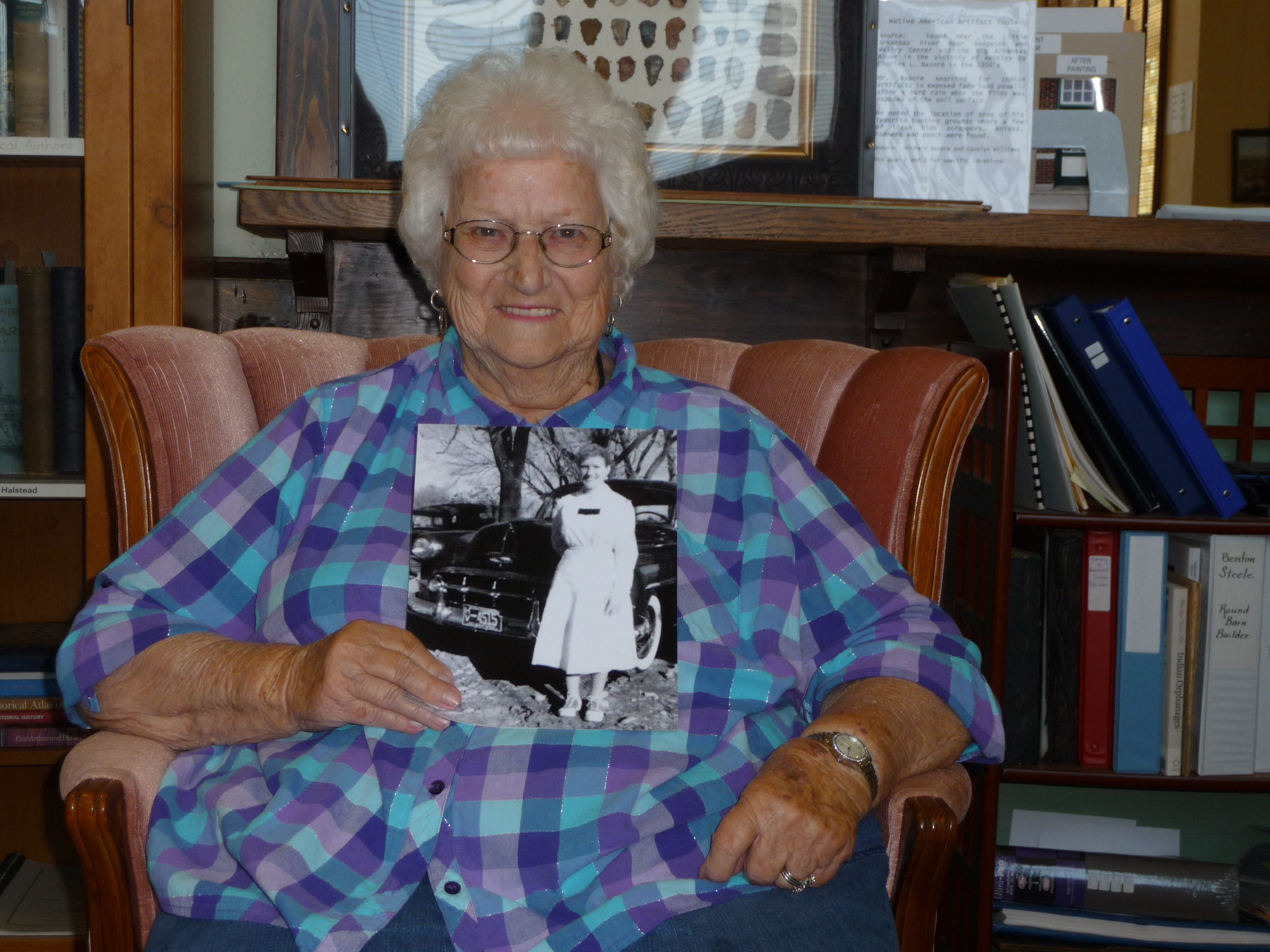Helen Collins of Halstead was volunteering at the Halstead Heritage Museum & Depot one afternoon when each of the three couples who visited wanted to meet “The Harvey Girl.” They were in luck.
Collins was a Harvey Girl in the 1950s and has given about 40 presentations about the experience.
“I love talking about the Harvey Girls,” she said. “This is one of my passions. I say I am keeping history alive.”
Collins is president of the Halstead Historical Society and much of her Harvey House memorabilia, including her uniform, are displayed at the museum. Collins is unaware of other living Harvey Girls in Kansas.
Early trains had no dining cars, so passengers either brought their own food or took their chances on roadhouse fare, with little time to eat between stops. An experienced restaurateur named Fred Harvey approached the Santa Fe Railroad about opening his own restaurants at its stations.
The first Harvey House opened in 1876 at Topeka’s depot. Conductors handed menus to passengers and orders were telegraphed ahead so food was ready when the trains stopped. Harvey set high standards for his restaurants and the Harvey Girls, who in the beginning were required to be single, between the ages of 17 and 30 and of good repute.
Being single was no longer a requirement in 1953 when Collins, who was 17 and married, began working at the Harvey House in Newton’s train station. But standards were still strict. On her first day, she spent eight hours waiting on the manager for training. “You could not spill one drop of coffee in a saucer,” she said. “If you did you had to go back for a clean saucer.” Eventually, Collins was able to carry four cups and their saucers in one hand or six plates between her two hands.
She worked at the counter from 3 to 11 p.m. and often pulled a second shift if a replacement did not show up. The counter was open 24 hours a day while the dining room was used for only lunch and dinner. Collins later moved to working in the dining room, where the china and the Irish linen “were of the best quality you could buy. It was an elegant experience.”
By then, many trains had dining cars and most Harvey House customers were local people.
One special memory is when Collins and her sister-in-law worked at the Harvey House in Gallup, N.M., for a week during a huge annual Native American intertribal celebration. “When you went out of the depot and looked up the hill, it was filled with Indian teepees and campfires.”
Different Harvey Houses sent two girls each year and they stayed in a dormitory with a housemother. An important chief took a liking to Collins and sent a car for her and her sister-in-law to attend the celebration each night. The chief also had Collins moved from the counter to the dining room to wait on him and his guests. “He said the smile and the personality were the two things that stood out on me,” she said.
Collins was disappointed when Newton’s Harvey House closed with little notice on May 5, 1957. It was the last one in Kansas. One of Collins’ keepsakes is a breakfast menu from the final day. “I treasure all of them but this one means a lot because all of the employees who worked there signed it.” It is in her thick scrapbook of beautifully illustrated menu covers, menus, napkins, newspaper stories, photos of special buffets and postcards.
The people she met made the job interesting, Collins said. “I used to tell people if I was able to work and there was still a Harvey House I would still work there.”
People interested in having Collins give a talk may contact her at 316-655-0780.
Contact Nancy Carver Singleton at ncsingleton@att.net










